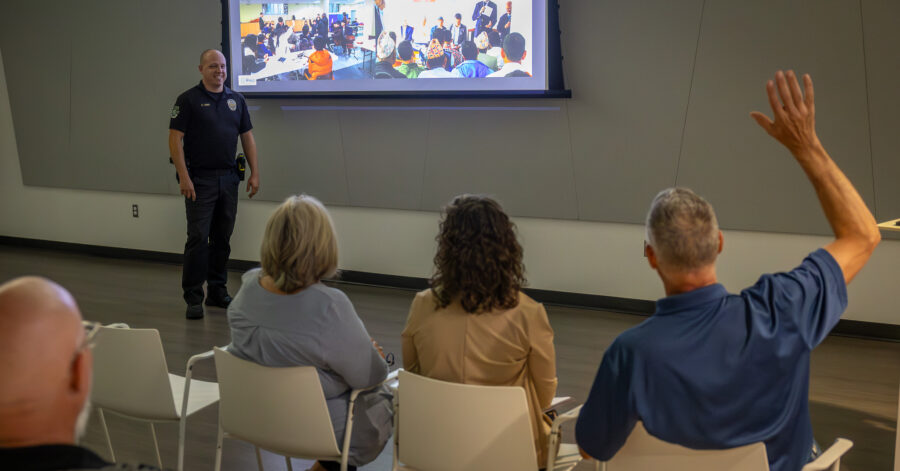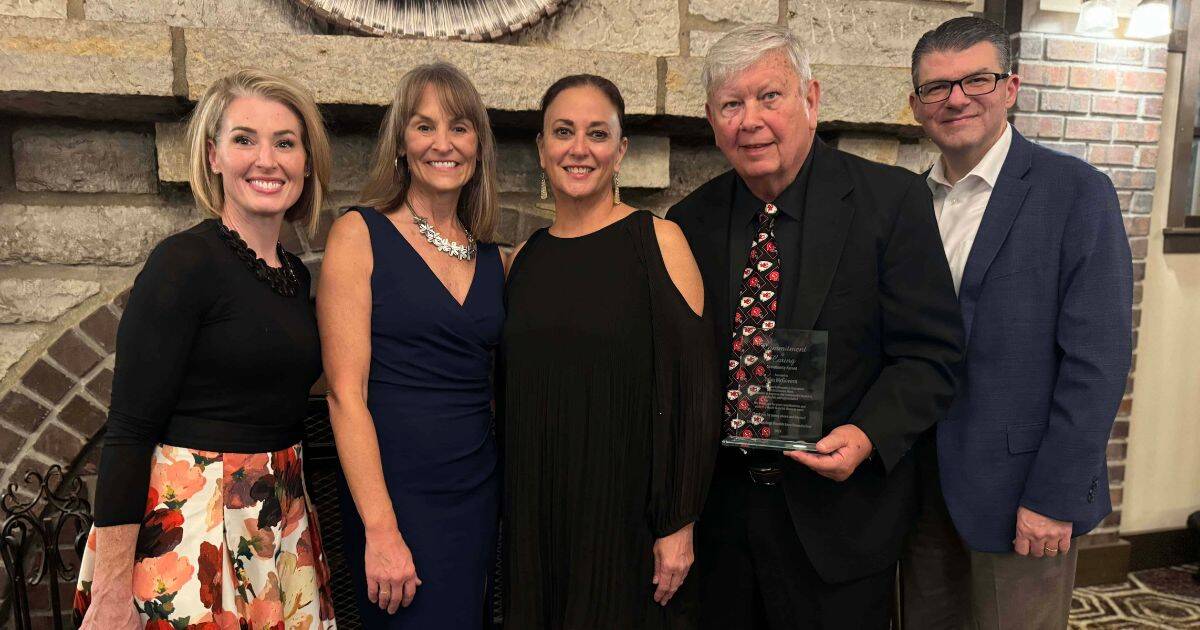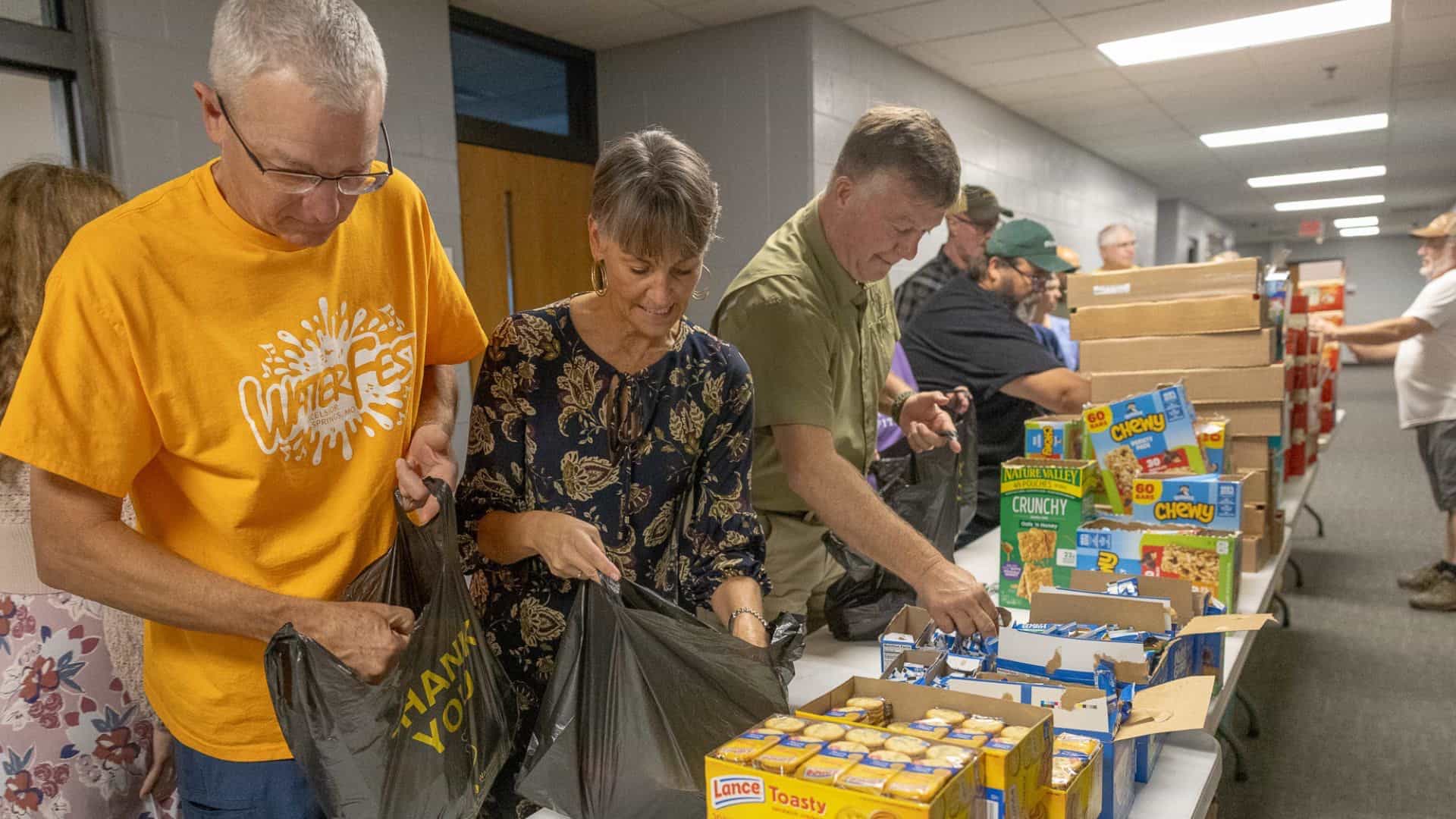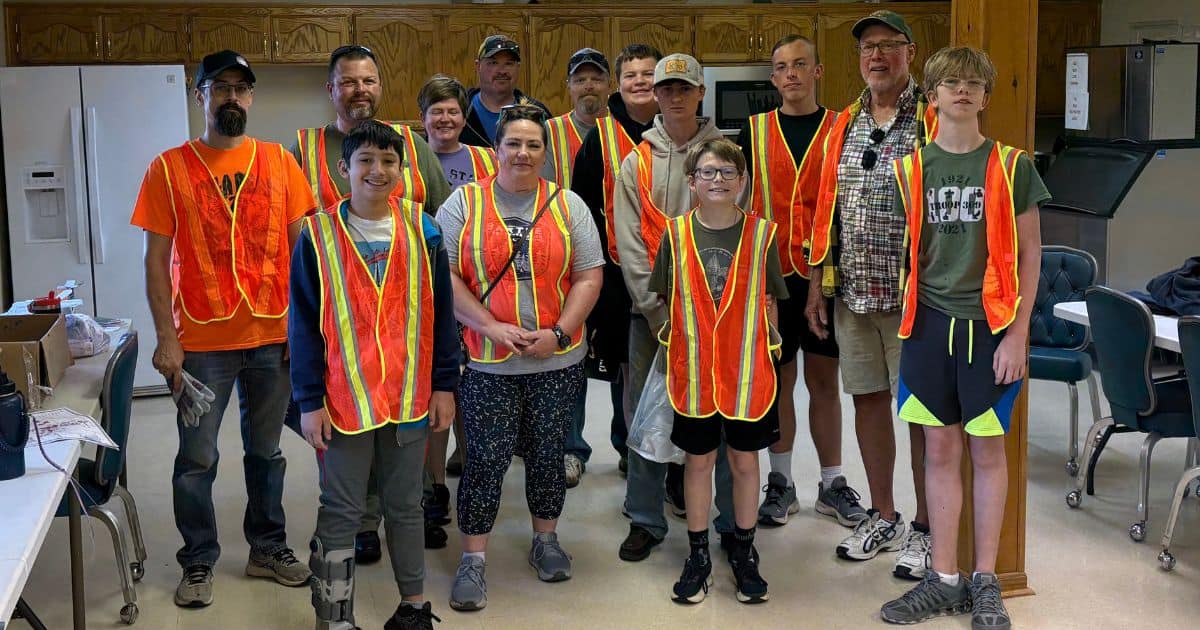
EXCELSIOR SPRINGS, Mo. (Sept. 16, 2025) – A rainy Tuesday evening didn’t dampen the conversation inside the Excelsior Springs Community Center, where a handful of residents and business owners gathered to hear Lt. Ryan Dowdy talk about property safety. The presentation was part crime prevention class, part practical workshop, and it gave attendees tools they could start using right away.
“This isn’t just about responding to crime after it happens,” Dowdy told the group. “It’s about designing and caring for your property in ways that make crime less likely to happen in the first place.”
The CPTED Approach
Dowdy’s talk focused on Crime Prevention Through Environmental Design, or CPTED, an approach that blends urban planning, architecture, and criminology. The idea is simple: if you change the way spaces are designed and maintained, you can change behavior and reduce opportunities for crime.
He broke the concept down into four core principles:
- Natural surveillance: Good lighting, open sightlines, and windows positioned to overlook outdoor spaces can make criminals feel exposed.
- Natural access control: Clear pathways, fences, and defined entrances help guide people where they’re supposed to go while making it harder to sneak around.
- Territorial reinforcement: Boundaries like signage, landscaping, or even paint help show a space is cared for and claimed by someone.
- Maintenance: A property that looks cared for, with trimmed landscaping, working lights, and repairs kept up, sends a message that it’s being watched.
“These design choices don’t just change how a place looks,” Dowdy explained. “They change how people behave when they’re in that space.”
Practical Advice for Property Owners
The lieutenant kept the talk grounded with advice homeowners and businesses could apply right away:
- Keep bushes and trees trimmed so they don’t create hiding spots.
- Install lights along walkways and near entrances.
- Use fencing or landscaping to make it clear what areas are private.
- Consider adding cameras or alarms as an added deterrent.
- Get to know neighbors and communicate about suspicious activity.
Dowdy emphasized that even small adjustments matter. “It’s often not about spending a lot of money. It’s about being intentional with how you set up and care for your property,” he said.
Clearing Up Misconceptions
One section of the talk addressed confusion about what police can, and can’t, do when it comes to rental properties.
“A lot of people think, ‘If I call the police, they’ll take care of it completely,’” Dowdy said. “But the truth is, our power and a landlord’s power are different.”
Police officers can enforce the law, make arrests, and protect lives and property, he explained. But they cannot evict someone from a home. That responsibility lies with landlords, who have the legal ability to remove tenants for lease violations, including those engaged in criminal activity or disruptive behavior.
Community Connection
While design and maintenance are key, Dowdy stressed that community involvement is just as important. He pointed to neighborhood watch groups and informal community networks as examples of how people can work together to keep an eye out for one another.
“When neighbors know each other and take ownership of their streets, it creates a sense of accountability,” he said. “Criminals don’t like to be where people are paying attention.”
The small group in attendance asked questions about lighting choices, landscaping strategies, and how to balance safety with making spaces feel welcoming. For Dowdy, that kind of back-and-forth was exactly the point.
“The more people are thinking about these things and talking about them, the safer our community becomes,” he said.
If you appreciate the value our local journalism brings to the community, please consider making a recurring contribution to the Excelsior Citizen!










